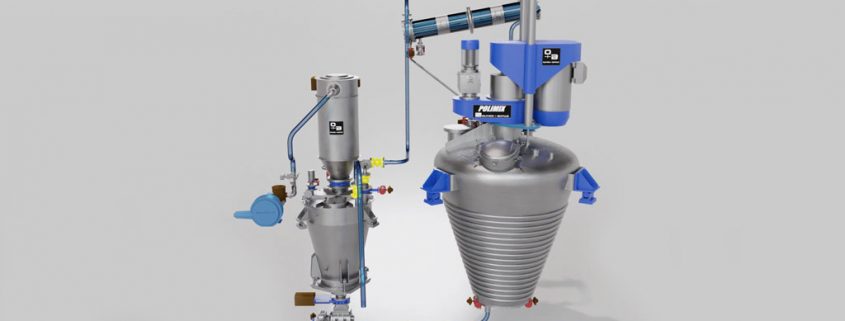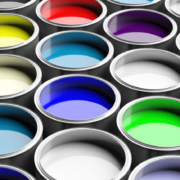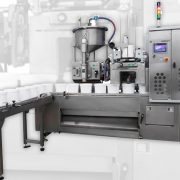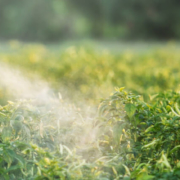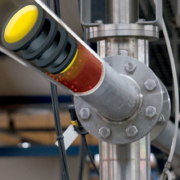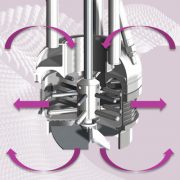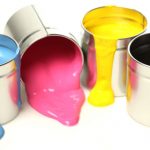DISPERVAC: optimises the process by incorporating solids by vacuum
At O+B we continue working to improve the production capacity of our clients by reducing costs and improving the quality of the finished product, always aiming for the greatest sustainability and respect for the environment. To this end, we have created DISPERVAC, a technology that enables solids to be incorporated by vacuum into mixing and dispersing equipment.
This article will describe how it works, and the main advantages it brings to the manufacturing process of paints and related products.
What is DISPERVAC and how does it work?
Throughout our more than 60 years of experience working in the paint and related products industry, we have acquired extensive experience in processes involving complex components. We have therefore worked on different options for the incorporation and dispersion of solids.
In this context, DISPERVAC is presented as a solution that not only optimises the production process, but also respects the environment and workers’ health.
Let’s see how it works:
How does DISPERVAC work?
Vacuum loading of solids involves the direct incorporation of product to the liquid. This technology enables solids loading directly through the bottom of the production vessel, achieving direct incorporation to the liquid into the mixer or disperser, by means of the bottom valve.
Solids loading is done in the hopper by opening the valves with the help of the blower system. The transfer from the outside to the hopper is carried out rapidly using a suction system that prevents dust emissions. Also, the dust suspended inside the DISPERVAC system is deposited in the filter, and is recovered by opening the valve, and incorporated again into the hopper.
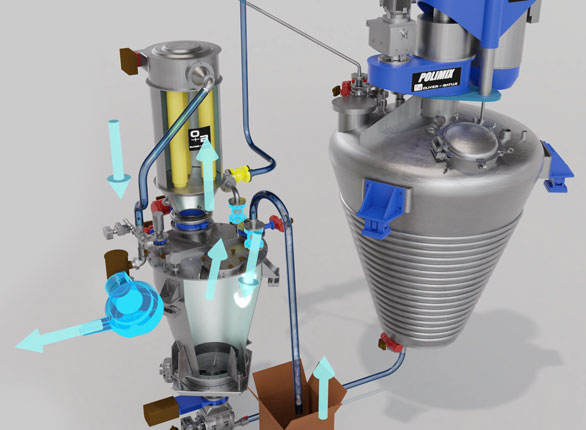
Once the hopper loading process has been completed, the incorporation into the mixing or dispersion equipment begins. This is done by opening the central valve to start the slight negative pressure induction process (between -100 mbar and -200 mbar).
The incorporation of solids into the liquid occurs continuously through the bottom valve. The typical input capacity of the DISPERVAC system is 4,000 l/h.
The entire system is a closed circuit that prevents dust emissions. In addition, it produces minimal dirt on the inner surface of the vessel, facilitating subsequent cleaning.
For the manufacture of solvent-based products such as nautical, aeronautical or automotive paints, DISPERVAC enables the condensate to be returned to the mixing or dispersion equipment.
To complete the process, O+B offers as part of your project the possibility of direct unloading to the filling machine or the finishing tank, as appropriate.
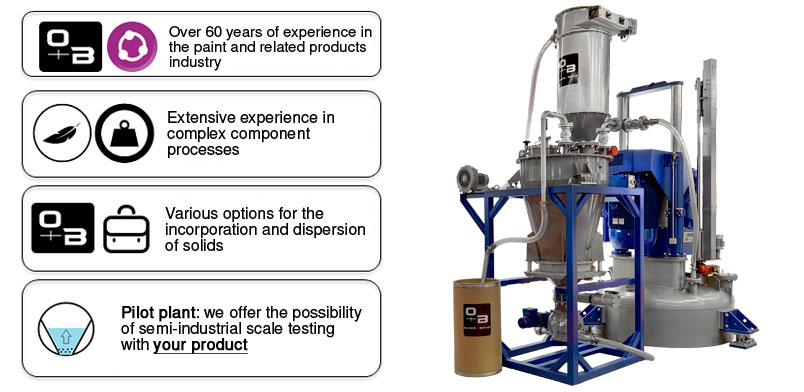
DISPERVAC has been successfully installed in several projects for the loading of light raw materials such as Aerosil, Micro beads and Carbon Black. Moreover, at the Oliver + Batlle facilities, we make available to our customers a pilot plant, designed to optimise this same technology and extend it to other solids generally used in the paint industry such as talc, carbonates, titanium dioxide etc.
Advantages for the process of manufacturing paints and related products
At O+B, we work to offer Smart Solutions to our clients in order to improve their productivity and workplace hygiene, and protect the environment. To this end, we have developed technologies such as the DISPERVAC system which, in addition to reducing production time, has clear environmental and safety advantages:
Elimination of dust emissions to the outside
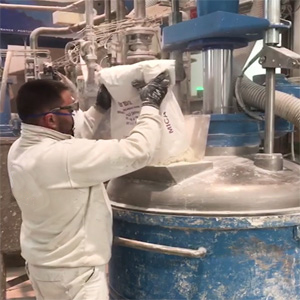
While loading solids by gravity creates an atmosphere that is harmful to workers and the environment, solids loading by vacuum in this technology enables for the immediate incorporation into the liquid, eliminating the emission of dust to the outside.
The suction system enables for solid loading without emissions to the outside.
In traditional transport, the loss of sealing implies a loss of dust towards the outside (through the flanges, seals, joints, etc.). Experience shows that dust leaks to the outside are common in industrial facilities equipped with pneumatic transport, especially if preventive maintenance is not carried out. With the vacuum transportation system, any risk of leak is eliminated.
Reduction of cleaning operations
With the DISPERVAC system, suspended solids disappear and consequently do not stick to the walls and dome of the vessel. This reduces and facilitates the cleaning operations of the mixing and dispersion equipment.
In addition, the work at heights to install or maintain the equipment is also reduced.
Advantages for manufacturing products with chemical solvents
Chemical solvents still play a major role in the manufacture of a large number of paints. This is particularly the case with speciality paints in, for example, the automotive, aeronautical, naval and cosmetics industries. On the other hand, in this type of industries it is necessary to carry out small productions with variable formulas, which makes them more susceptible to manual loading.
The solids incorporation by vacuum system eliminates the inhalation of solvent fumes by employees and makes it possible to work in a closed system that enables correct inertisation, thus greatly reducing the risk of fire and explosion.
Absence of product losses
As we have already mentioned, the incorporation of solids by the suction system and the design of a fully closed incorporation system makes a production process that minimises product losses.
This advantage of the DISPERVAC system achieves further optimisation and cost reduction in products that use TiO2 pigment. The cost of pigments in the manufacture of paints and inks is a major factor, so any savings in these can be of significant value to the manufacturing company. Specifically, the TiO2 pigment can be as much as 25 or 40% of the manufacturing cost depending on the product. Consequently, ensuring its correct and complete incorporation into the process can mean a clear reduction in manufacturing costs.
On the other hand, the possibility of this type of pigment being a carcinogenic product is being investigated and future legislation on its use is being considered. The DISPERVAC system solves the handling of powder pigments by facilitating the direct incorporation of TiO2 into the liquid medium through the dispersion process. In addition, the colorimetric power of the pigments also increases, making it possible to reduce the amount in the formulas.
At Oliver + Batlle we invite you to request more information about the DISPERVAC system through our contact page. Keep up to date with all our news on our LinkedIn profile.

